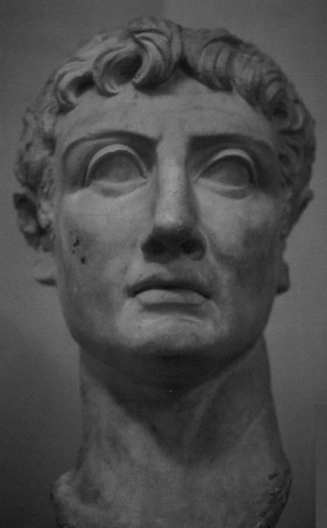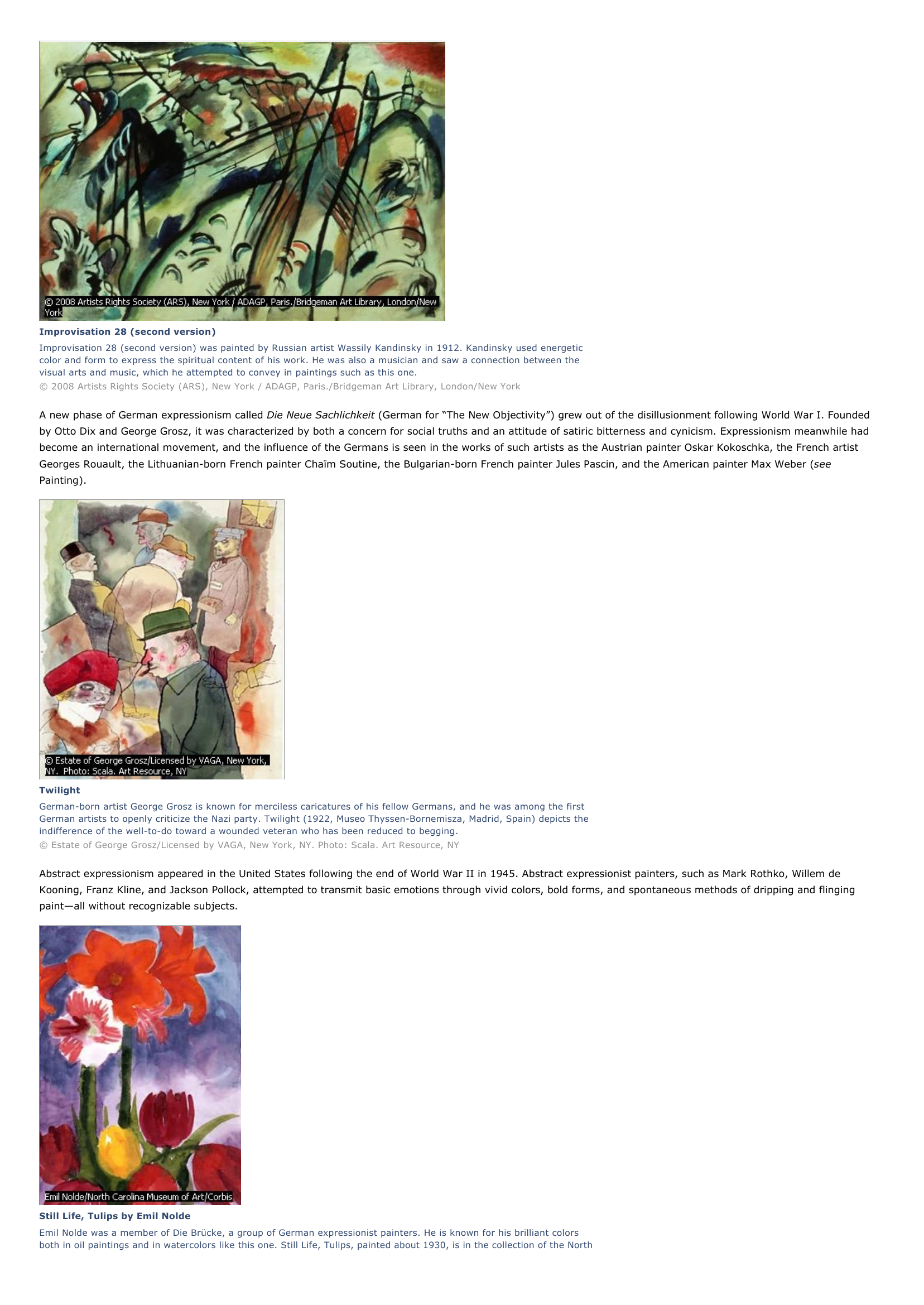Expressionism I INTRODUCTION Auguste Rodin Regarded as the foremost sculptor of the 19th and 20th centuries, French artist Auguste Rodin captured both dynamic movement and inner psychological states.
Publié le 12/05/2013

Extrait du document


«
Improvisation 28 (second version)Improvisation 28 (second version) was painted by Russian artist Wassily Kandinsky in 1912.
Kandinsky used energeticcolor and form to express the spiritual content of his work.
He was also a musician and saw a connection between thevisual arts and music, which he attempted to convey in paintings such as this one.© 2008 Artists Rights Society (ARS), New York / ADAGP, Paris./Bridgeman Art Library, London/New York
A new phase of German expressionism called Die Neue Sachlichkeit (German for “The New Objectivity”) grew out of the disillusionment following World War I.
Founded by Otto Dix and George Grosz, it was characterized by both a concern for social truths and an attitude of satiric bitterness and cynicism.
Expressionism meanwhile hadbecome an international movement, and the influence of the Germans is seen in the works of such artists as the Austrian painter Oskar Kokoschka, the French artistGeorges Rouault, the Lithuanian-born French painter Chaïm Soutine, the Bulgarian-born French painter Jules Pascin, and the American painter Max Weber ( see Painting).
TwilightGerman-born artist George Grosz is known for merciless caricatures of his fellow Germans, and he was among the firstGerman artists to openly criticize the Nazi party.
Twilight (1922, Museo Thyssen-Bornemisza, Madrid, Spain) depicts theindifference of the well-to-do toward a wounded veteran who has been reduced to begging.© Estate of George Grosz/Licensed by VAGA, New York, NY.
Photo: Scala.
Art Resource, NY
Abstract expressionism appeared in the United States following the end of World War II in 1945.
Abstract expressionist painters, such as Mark Rothko, Willem deKooning, Franz Kline, and Jackson Pollock, attempted to transmit basic emotions through vivid colors, bold forms, and spontaneous methods of dripping and flingingpaint—all without recognizable subjects.
Still Life, Tulips by Emil NoldeEmil Nolde was a member of Die Brücke, a group of German expressionist painters.
He is known for his brilliant colorsboth in oil paintings and in watercolors like this one.
Still Life, Tulips, painted about 1930, is in the collection of the North.
»
↓↓↓ APERÇU DU DOCUMENT ↓↓↓
Liens utiles
- Henri Matisse Henri Matisse (1869-1954), French artist, leader of the fauve group (see Fauvism), regarded as one of the great formative figures in 20th-century art, a master of the use of color and form to convey emotional expression.
- Cubism I INTRODUCTION Cubism, movement in modern art, especially in painting, invented by Spanish artist Pablo Picasso and French artist Georges Braque in 1907 and 1908.
- Winston Churchill I INTRODUCTION Winston Churchill (1874-1965), British politician and prime minister of the United Kingdom (1940-1945, 1951-1955), widely regarded as the greatest British leader of the 20th century.
- Mao ZedongIINTRODUCTIONMao Zedong (1893-1976), foremost Chinese Communist leader of the 20th century and the principal founder of the People's Republic of China.
- Poseidon Greek Sea god and one of the Olympian gods; son of Cronus and Rhea; brother of Zeus, Hades, Demeter, Hera, and Hestia; husband The Roman goddess Pomona displays her fruits of plenty in the painting by French artist Nicholas Fouche (1653-1733).










